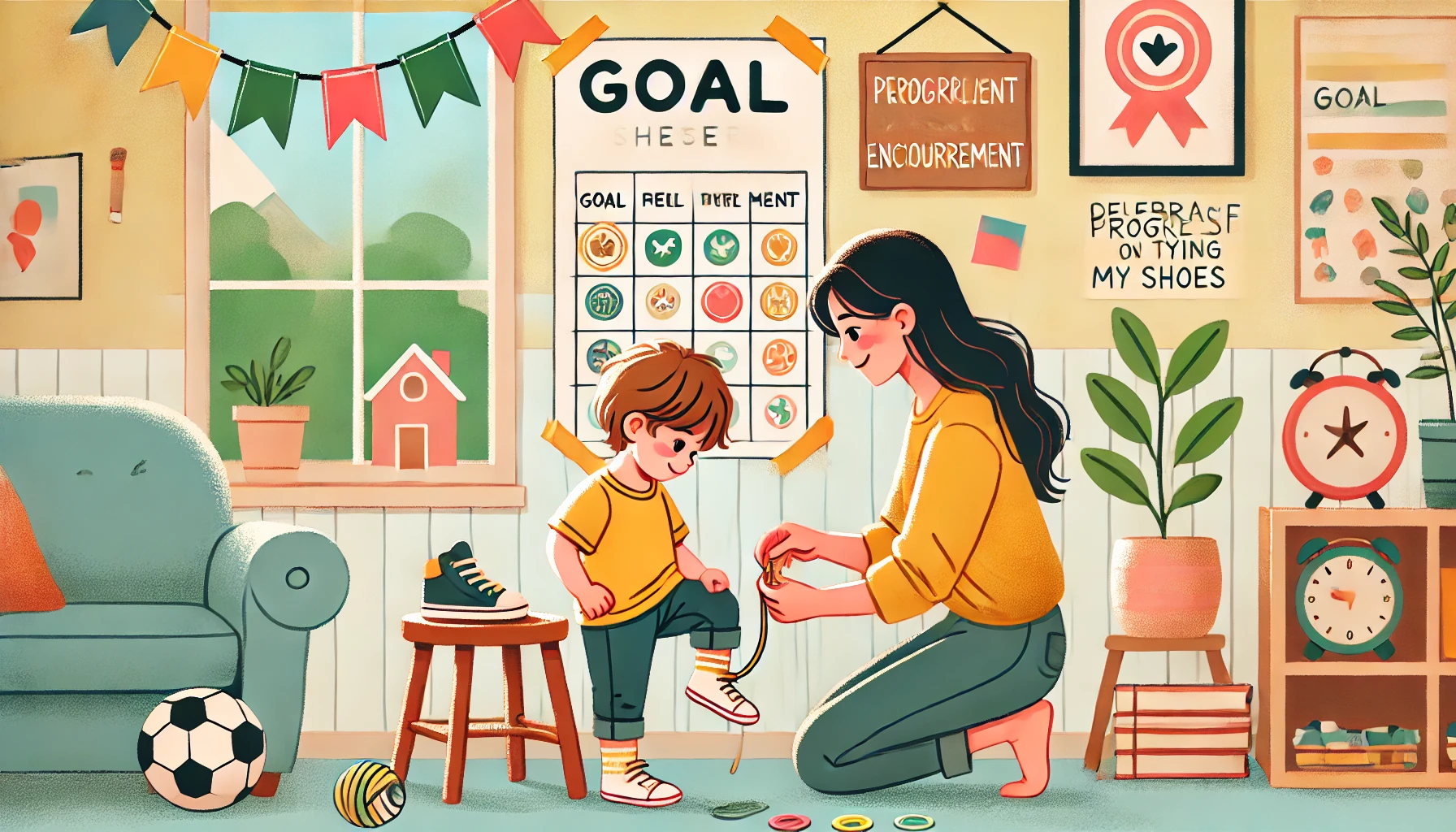How to Teach Young Children About Setting and Achieving Goals
Teaching young children about setting and achieving goals helps them develop motivation, focus, and a sense of accomplishment. Learning how to set simple, realistic goals encourages perseverance and problem-solving skills, preparing kids for lifelong success. Parents can guide children in setting goals through structured activities, encouragement, and positive reinforcement. In this article, we’ll explore practical ways to help children understand and achieve their goals.
Why Teaching Goal-Setting is Important
- Builds confidence and self-motivation – Helps children see that effort leads to success.
- Encourages responsibility – Teaches kids to take charge of their progress.
- Develops problem-solving skills – Shows them how to overcome challenges.
- Creates a growth mindset – Helps children understand that skills improve with effort.
- Prepares for school and life success – Teaches discipline and planning.
1. Explain Goals in a Simple and Fun Way
Children need to understand what goals are before they can set them.
Activity Idea:
- Use simple language: “A goal is something you want to do, and you keep trying until you reach it.”
- Give examples: “If you want to learn to ride a bike, practicing every day is your goal!”
- Relate goals to their favorite activities: “If you want to build a big LEGO tower, you start one block at a time.”
What Kids Learn:
- That goals are things they work toward over time
- How setting goals can help them achieve what they want
- The importance of patience and effort
2. Help Children Set Small, Achievable Goals
Breaking goals into small steps makes them easier to accomplish.
Activity Idea:
- Instead of “I want to read a book,” break it into “I will read one page each night.”
- Use a goal chart where kids track progress with stickers or drawings.
- Set a fun weekly challenge, like learning to tie shoes or jumping rope five times in a row.
What Kids Learn:
- How to work toward bigger achievements step by step
- The importance of setting realistic and achievable goals
- That small successes build confidence
3. Make Goal-Setting Visual and Engaging
Using charts, drawings, and checklists helps kids stay motivated.
Activity Idea:
- Create a “goal board” where kids draw or write their goals.
- Use a star chart to track progress and celebrate small wins.
- Make a goal jar, where children pull out a small task to complete each day.
What Kids Learn:
- That seeing progress helps them stay focused
- How tracking goals makes them feel more achievable
- The excitement of working toward something fun
4. Teach Patience and Effort Through Play
Games and activities help children understand that goals take time.
Activity Idea:
- Play building games where kids work toward a final creation.
- Use a puzzle challenge to show how effort leads to completion.
- Set a physical goal, like running faster or jumping higher, and practice daily.
What Kids Learn:
- That reaching a goal requires practice and persistence
- How fun activities can help them improve skills
- That effort makes them stronger and more capable
5. Encourage Problem-Solving When Facing Challenges
Learning how to adjust and overcome obstacles is an important skill.
Activity Idea:
- If a child struggles, ask, “What else can we try?”
- Encourage trial and error, showing that mistakes are part of learning.
- Role-play goal-setting scenarios, like “What would you do if you wanted to learn a new game?”
What Kids Learn:
- That obstacles are normal and can be solved
- How to stay positive when things don’t go as planned
- The importance of adjusting goals when necessary
6. Use Stories and Books About Goal-Setting
Books help children see characters working toward goals and overcoming challenges.
Activity Idea:
- Read The Most Magnificent Thing by Ashley Spires or Whistle for Willie by Ezra Jack Keats.
- Pause and ask, “How did the character reach their goal?”
- Relate the story to your child’s experiences: “Have you ever kept trying at something hard?”
What Kids Learn:
- That patience and persistence lead to success
- How characters’ experiences apply to real life
- That working toward goals is rewarding
7. Celebrate Effort and Progress, Not Just Results
Recognizing effort encourages children to keep trying.
Activity Idea:
- Say, “I love how hard you worked on that puzzle!” instead of just celebrating the final result.
- Give small rewards for effort, like extra playtime or a fun sticker.
- Ask, “How do you feel now that you’ve worked so hard?” to encourage self-reflection.
What Kids Learn:
- That effort is valuable, even if they don’t reach the goal right away
- How perseverance makes them feel proud
- The importance of appreciating progress, not just results
8. Set Family Goals to Work on Together
Working toward a goal as a family teaches teamwork and motivation.
Activity Idea:
- Set a family fitness goal, like walking a certain number of steps each week.
- Work together on a home project, like planting a garden or organizing a room.
- Plan a reading challenge, where everyone reads a book together.
What Kids Learn:
- That goal-setting is fun and rewarding
- How teamwork helps reach goals faster
- The excitement of working toward something as a group
Final Thoughts
Teaching young children about setting and achieving goals helps them develop motivation, perseverance, and confidence. By using small steps, visual tracking, and encouraging effort, parents can help children understand that working toward a goal is just as important as reaching it.
